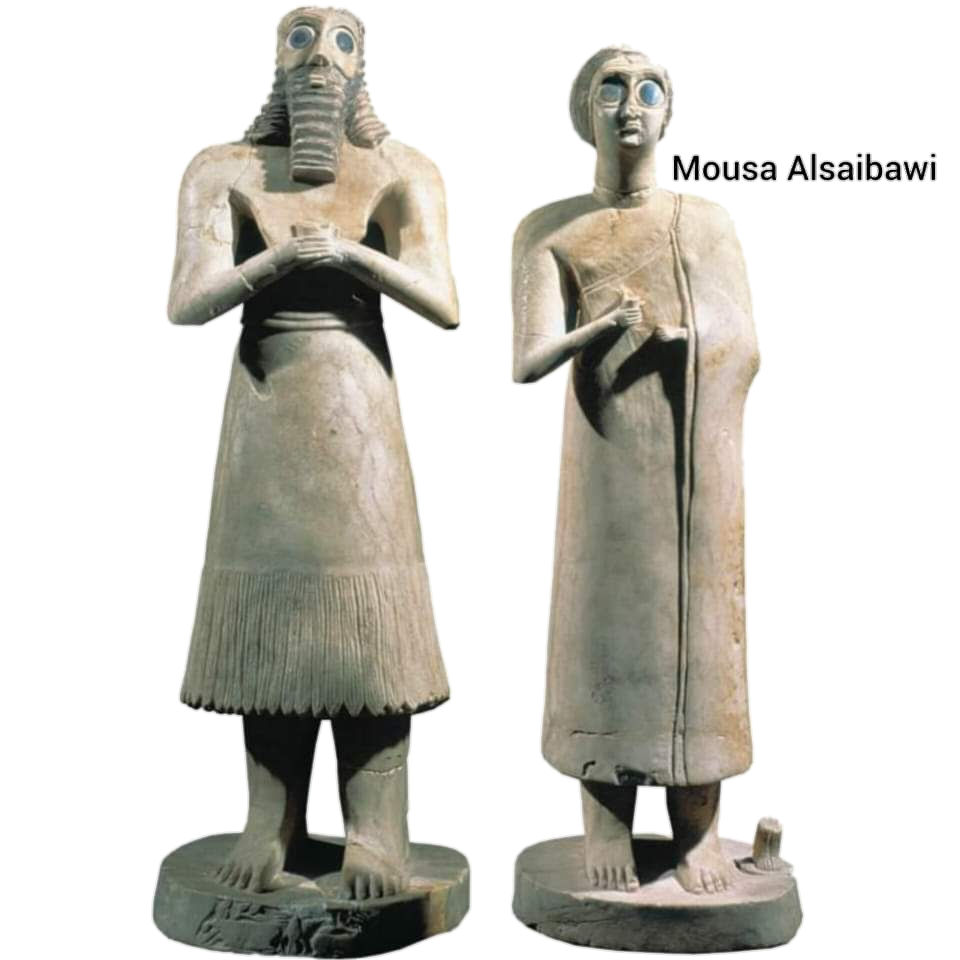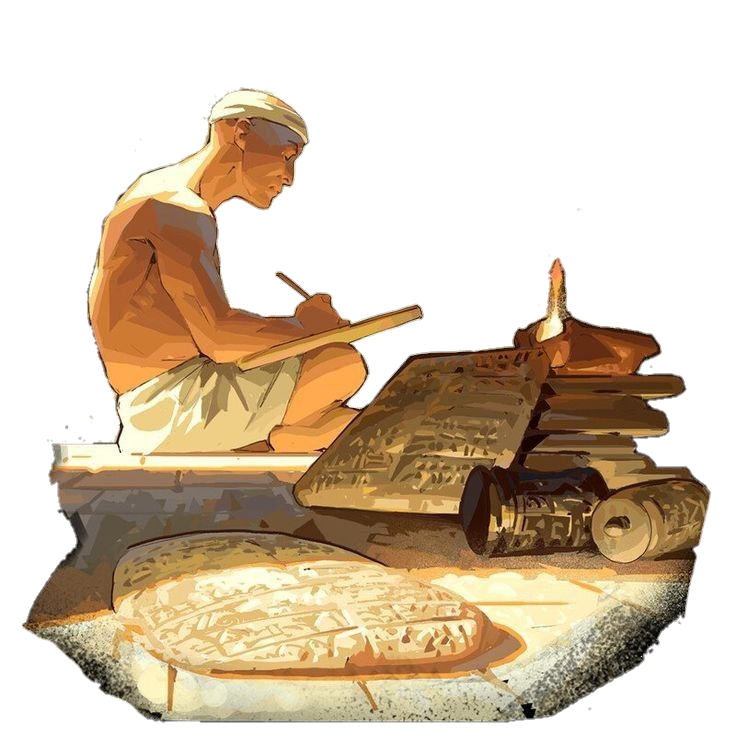Schools in ancient Iraq
ave you ever wondered what school life was like for a young child in Mesopotamia? Well, this tablet includes a mesopotamia tale that recounts two days in the life of a schoolboy—days filled with tedious work and harsh punishment! “Schoolboy, A30217: clay, Iraq, Nippur, Old Babylonian period (2004–1595 BC)
where did you go from earliest days?” “I went to school.” “What did you do in school?”
“I read my tablet, ate my lunch, prepared my tablet, wrote it, finished it…
Upon the school’s dismissal,
I went home, entered the house, there was my father sitting.
” He who was in charge of drawing said,
“Why when I was not here did you stand up?” (and) caned me. He who was in charge of the gate said, “Why when I was not here, did you go out?” (and) caned me. He who was in charge of the Sumerian said: “You spoke Akkadian!” (and) caned me.

Schools in ancient Iraq the schools in Babylonia and Assyria made the study of Sumerian their basic discipline. They therefore compiled what may be described as bilingual syllabaries or dictionaries in which the Sumerian words or phrases were translated into their own language Accadian. In addition they also drew up interlinears of the Sumerian literary compositions in which each Sumerian line is followed by its Accadian translation
Our Sources :
History Begins at Sumer (Philadelphia, 1956), Thirty Nine Firsts in Recorded History, by Samuel Noah Kramer, in 404 searchable pdf pages.
Selected Writings of Samuel Noah Kramer, in 570 bookmarked and searchable pdf pages.
Green، M.W. (1981). “The Construction and Implementation of the Cuneiform Writing System
Samuel Noah Kramer University of Pennsylvania Press, 1972 – History – 130 pages
- Kramer, Samuel Noah (1944). Sumerian Mythology: A Study of Spiritual and Literary Achievement in the Third Millennium B.C. American Philosophical Society. Revised edition: 1961.
- Kramer, Samuel Noah (1981). History Begins at Sumer: Thirty-Nine Firsts in Man’s Recorded History (3 ed.). University of Pennsylvania Press. I. First edition: 1956 (Twenty-Five Firsts). Second Edition: 1959 (Twenty-Seven Firsts).
- Kramer, Samuel Noah (1963). The Sumerians: Their History, Culture, and Character Samuel Noah Kramer (PDF). University of Chicago Press.
- Kramer, Samuel Noah (1967). Cradle of Civilization: Picture-text survey that reconstructs the history, politics, religion and cultural achievements of ancient Sumer, Babylonia and Assyria. Time-Life: Great Ages of Man: A History of the World’s Cultures..
- Wolkstein, Diane; Kramer, Samuel Noah (1983). Inanna, Queen of Heaven and Earth: Her Stories and Hymns from Sumer. New York: Harper & Row.
- Kramer, Samuel Noah (1988a). In the World of Sumer: An Autobiography. Wayne State University Press
- Babylon: Mesopotamia and the Birth of Civilization. Paul Kriwaczek.
Ancient Mesopotamia. Leo Oppenheim.
Ancient Mesopotamia: This History, Our History. University of Chicago.
Mesopotamia 8000-2000 B.C. Metropolitan Museum of Art.
30,000 Years of Art. Editors at Phaidon. - Treasures of the Iraq Museum Faraj Basmachi Ministry of Information, 1976 – Art, Iraqi – 426 pages
- Algaze, Guillermo, 2008 Ancient Mesopotamia at the Dawn of Civilization: the Evolution of an Urban Landscape. University of Chicago Press
- Atlas de la Mésopotamie et du Proche-Orient ancien, Brepols, 1996
- Bottéro, Jean; 1987. (in French) Mésopotamie. L’écriture, la raison et les dieux, Gallimard, coll. « Folio Histoire »,
- Edzard, Dietz Otto; 2004. Geschichte Mesopotamiens. Von den Sumerern bis zu Alexander dem Großen, München,
- Hrouda, Barthel and Rene Pfeilschifter; 2005. Mesopotamien. Die antiken Kulturen zwischen Euphrat und Tigris. München 2005 (4. Aufl.),
- Joannès, Francis; 2001. Dictionnaire de la civilisation mésopotamienne, Robert Laffont.
- Korn, Wolfgang; 2004. Mesopotamien – Wiege der Zivilisation. 6000 Jahre Hochkulturen an Euphrat und Tigris, Stuttgart,
- Matthews, Roger; 2005. The early prehistory of Mesopotamia – 500,000 to 4,500 BC, Turnhout 2005,
- Oppenheim, A. Leo; 1964. Ancient Mesopotamia: Portrait of a dead civilization. The University of Chicago Press: Chicago and London. Revised edition completed by Erica Reiner, 1977.
- Pollock, Susan; 1999. Ancient Mesopotamia: the Eden that never was. Cambridge University Press: Cambridge.
- Postgate, J. Nicholas; 1992. Early Mesopotamia: Society and Economy at the dawn of history. Routledge: London and New York.
- Roux, Georges; 1964. Ancient Iraq, Penguin Books.
- Silver, Morris; 2007. Redistribution and Markets in the Economy of Ancient Mesopotamia: Updating Polanyi, Antiguo Oriente
- Pingree, David (1998). “Legacies in Astronomy and Celestial Omens”. In Dalley, Stephanie (ed.). The Legacy of Mesopotamia. Oxford University Press.
- Stager, L. E. (1996). “The fury of Babylon: Ashkelon and the archaeology of destruction”. Biblical Archaeology Review. 22 (1).
- Stol, Marten (1993). Epilepsy in Babylonia. Brill Publishers.
- Louvre Museum
- Vatican Museums
- British Museum
- Metropolitan Museum of Art
- Rijksmuseum
- Ashmolean Museum
- Cleveland Museum of Art
- Art Institute of Chicago
- Field Museum of Natural History


